In a market teeming with options, customer engagement and loyalty are a must if you want to keep your customers. Effective strategies not only capture customer attention but also foster long-term relationships. Here’s how you can leverage these tactics for better customer connection and loyalty.
1. Reward program: Promotion during pre-launch and beyond
Early engagement
Promoting your reward program during the pre-launch phase creates excitement and buzz. This early promotion is an incentive for customers to engage from the outset.
Ongoing promotion
Continuously promoting the rewards program post-launch keeps the momentum going. Regular updates and added benefits based on customer feedback keep it relevant.



Amazon promotes Prime to potential members through free trial offers and early access to deals before the official launch of major sales events like Prime Day. This builds anticipation and gets people to sign up. Post-launch, Amazon adds value to the Prime membership with benefits like free shipping, exclusive content, and special discounts.
Transparency and visibility
Clearly communicating the advantages of your rewards program on primary product pages enhances visibility and underscores value, making it easier for customers to understand what they get by joining.
Plus, strategies like early-bird offers or special access to new products incentivize sign-ups. Consider marketing through multiple channels, including email campaigns, social media, and even direct mail, to ensure that your target audience is aware of and excited about your launch.
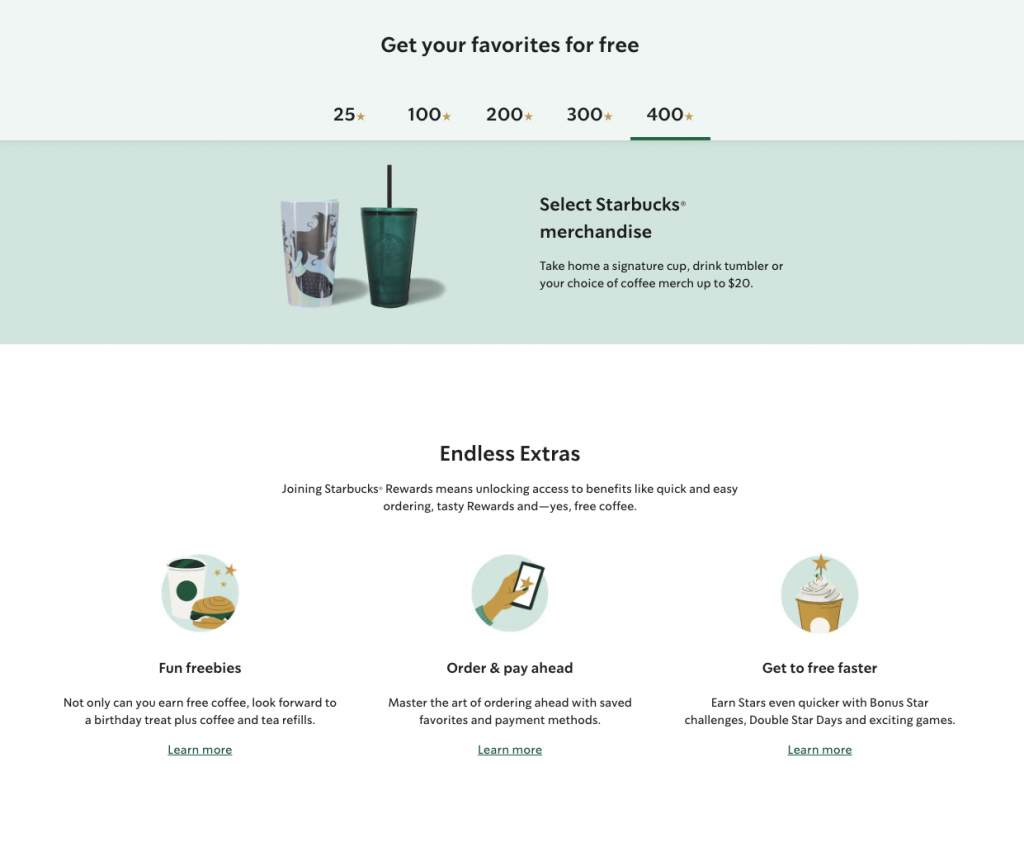
The Starbucks Rewards program offers a range of benefits designed to reward loyal customers with every purchase. Members earn “Stars” on each transaction, which they can redeem for free drinks, food, or exclusive Starbucks merchandise. With perks like birthday treats, free refills, and faster earning opportunities through Bonus Star challenges, the program adds an extra layer of value to each visit and keeps customers coming back for more.
Also read:
The Customer Experience Advantage
Calculating Customer Lifetime Value: Insights for eCommerce Success
2. Gifts with purchases or unique perks like extended warranty
Value addition through non-financial incentives
Beyond just savings, offering tangible gifts or extended warranties can differentiate your brand from competitors. These perks, perceived as high value, can tip the balance in favor of your brand when customers make purchasing decisions.
Prominent perk communication
Customers often miss available perks and benefits. Make these perks clear and visible so all potential and existing customers know the full value of what they’re getting with their purchase. This makes your brand more attractive.
Also, cultivating partnerships with other companies to provide exclusive co-branded perks can also enhance the appeal. For instance, collaborating with popular brands for limited-edition gifts can generate additional interest and excitement around purchases.
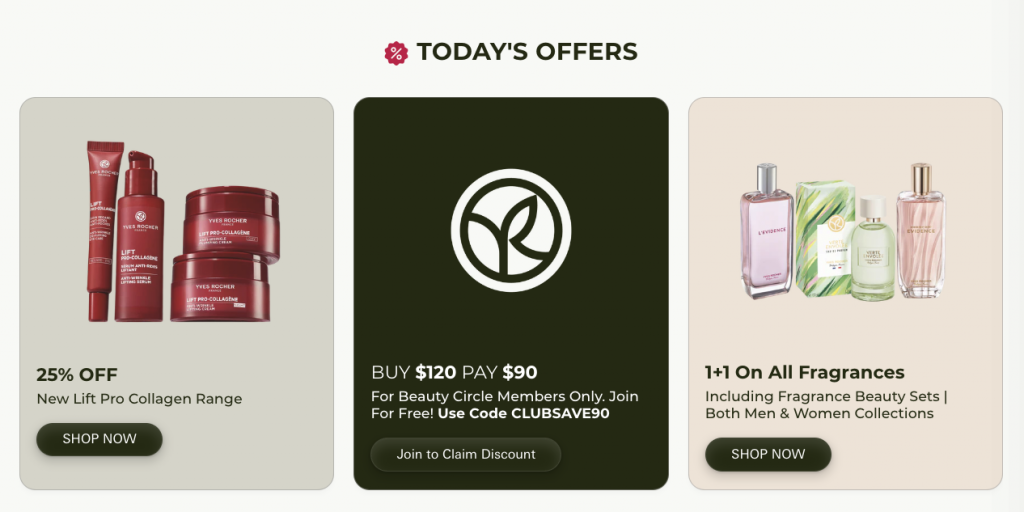
Yves Rocher’s promotional offers, like member-exclusive discounts and buy-one-get-one deals, add extra value to customer purchases. These perks encourage membership sign-ups and reward loyalty, providing customers with tangible benefits that go beyond simple discounts.
3. AI-powered personal promotions/interactive quizzes
Personalized marketing
Using AI to tailor promotions to individual customer preferences significantly enhances engagement. Personalized interactions cater directly to your customer needs and are more likely to resonate and elicit a positive response.
Engagement through interactivity
Adding interactive elements like quizzes into the customer journey can transform the shopping experience. These features engage customers actively and provide valuable insights into their preferences.
Using the data collected from these interactions, you can continuously improve the personalization of content, which improves the experience for your customers and drives higher conversion rates for you. This iterative approach keeps your brand relevant and highly responsive to consumer trends and preferences.
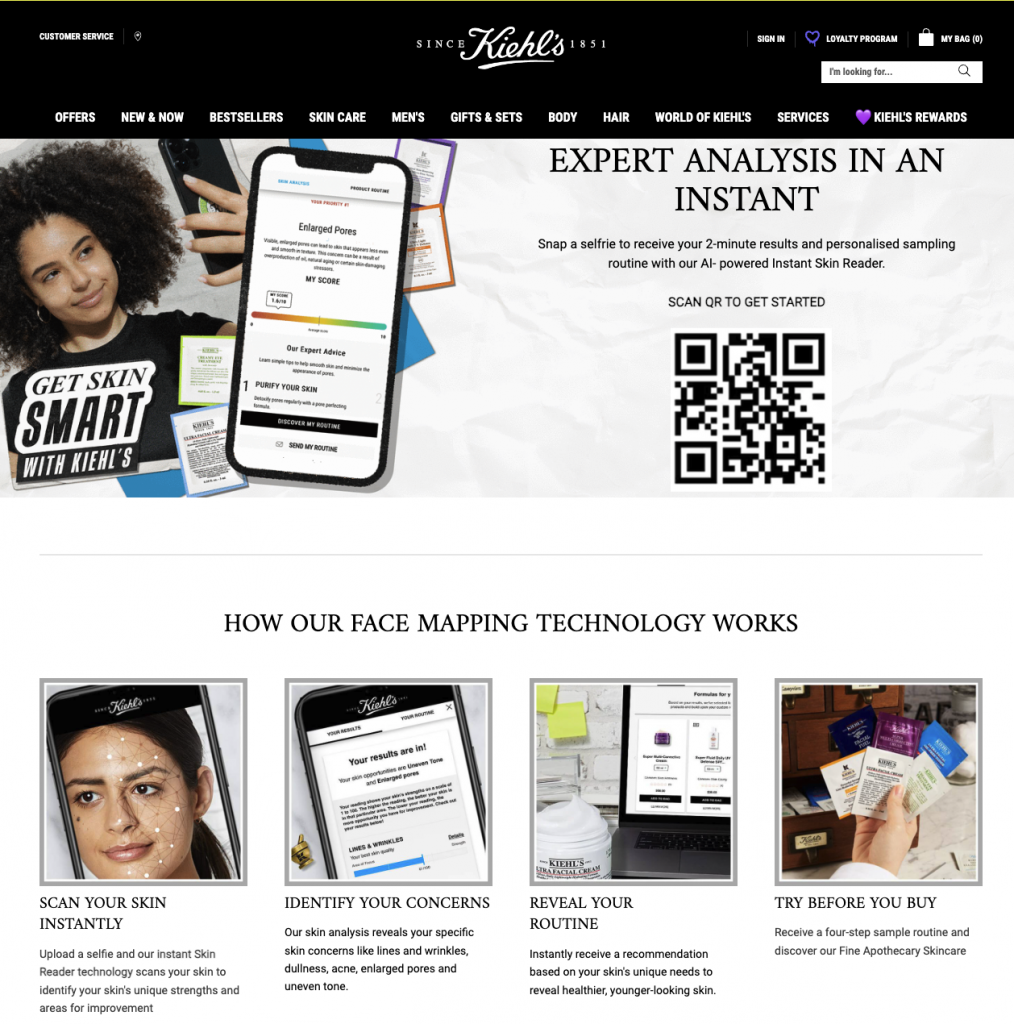
Imagine snapping a quick selfie and getting instant, expert skincare advice tailored just for you. With Kiehl’s AI-powered skin reader, you’ll see an in-depth analysis of your unique skin concerns—like fine lines, pores, or uneven tone. In just two minutes, you’ll have personalized product recommendations and a routine designed to bring out your healthiest skin.
4. Engaging with users on social media
Community engagement
Active participation in social media groups and communities related to your brand’s field can bolster presence and engagement. Post regularly, engage with content, and interact with the community to strengthen your brand’s community ties.
Direct customer interaction
Responding to comments, addressing concerns, and initiating discussions on social media can make your customers feel valued and respected. This direct engagement is crucial for building trust and loyalty, as customers feel more connected to the brand.
Organize virtual events or live sessions to take it to the next level—give customers real-time access to your brand. These events can be informative, such as new product demonstrations, or interactive, like live Q&A sessions, which foster a deeper bond and community spirit.
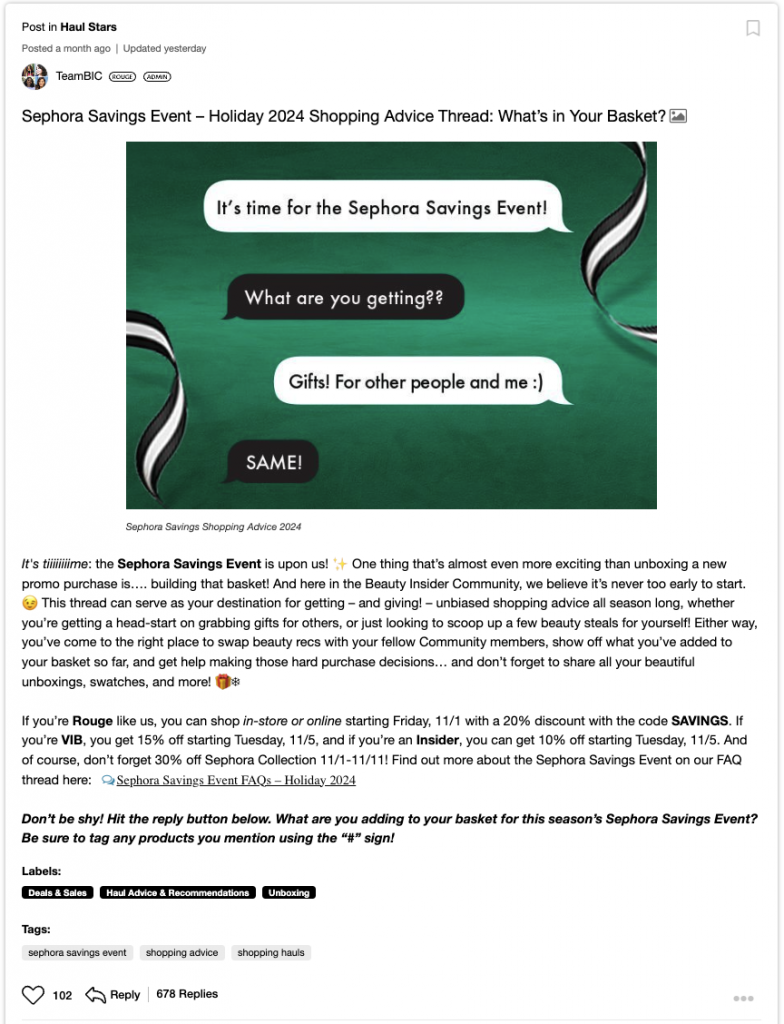
Sephora’s Savings Event thread encourages community engagement by inviting customers to share their shopping plans and tips, fostering a sense of excitement and connection around the event. This interactive approach makes customers feel part of a larger community and enhances brand loyalty through direct social engagement.
Also read:
What is Social Commerce? Stats, Trends, and Tips Marketers Should Know
Growing Brand Awareness Through Social Media
Engaging with your audience on social media channels like Facebook, Instagram, Twitter, and TikTok builds trust and shows that your brand values their input. When customers feel heard and acknowledged, they’re more likely to stay engaged and loyal. Plus, direct conversations provide valuable insights into customer needs and preferences, which can guide better product decisions and marketing strategies.
For example, after SEO efforts and active community building, scandiweb achieved positive results for a multinational conglomerate known for its range of consumer electronics and home appliances.
Organic traffic KPIs Q2 2024 vs Q2 2023 for one region:
- +38.3% all clicks
- +53% branded queries
- +32% non-branded queries
Implementing these strategies
Developing a strategic plan
When implementing engagement and loyalty strategies, start with creating a comprehensive plan that details objectives, timelines, and responsibilities.
This blueprint serves as a guide to align all teams involved—from marketing to customer service—and ensures that everyone understands their role in achieving the desired outcomes. It’s important that this plan remains flexible to accommodate insights and adjustments needed as the strategy rolls out.
Setting up analytics tools
To effectively measure the impact of these strategies, setting up robust analytics tools is crucial. These tools will track engagement metrics, participation rates in loyalty programs, and customer feedback across various channels. By establishing key performance indicators (KPIs) such as customer lifetime value, repeat purchase rate, and conversion rates from promotional activities, you can quantify the success of your initiatives and identify areas for improvement.
Reviewing and refining strategies
Engagement and loyalty programs should evolve based on customer interactions and feedback. Regularly schedule reviews of the program’s performance to understand what’s working and what isn’t. This iterative process allows for the fine-tuning of strategies, helping to better meet customer expectations and adapt to changing market dynamics. Using customer feedback effectively will help you significantly enhance your program offerings and communication strategies.
Maintaining effective communication
Lastly, communication is the linchpin in the successful implementation of any customer engagement and loyalty strategy. Maintain clear, consistent, and compelling messaging throughout all channels to keep customers informed and interested. This includes updates about new rewards, changes to the program, and exclusive offers. Effective communication enhances transparency and reinforces your brand’s commitment to the customers.
Wrapping up
Building strong customer engagement and loyalty takes thoughtful planning and consistent effort. From strategic reward programs to personalized interactions on social media, each approach strengthens the bond between your brand and its customers. By continuously refining these strategies based on feedback and performance metrics, you can create a lasting impact that keeps customers coming back.
Remember, engagement isn’t just about short-term gains—it’s about building relationships that last. Implement these strategies with care, stay adaptable, and watch your customer loyalty grow.
Explore our popular eCommerce services
Looking to deepen your connection with customers in a meaningful way? scandiweb can help. Whether it’s building a loyal community or crafting a standout PR strategy, we’re here to bring your brand closer to its audience. Reach out to explore how we can grow together—one loyal customer at a time.
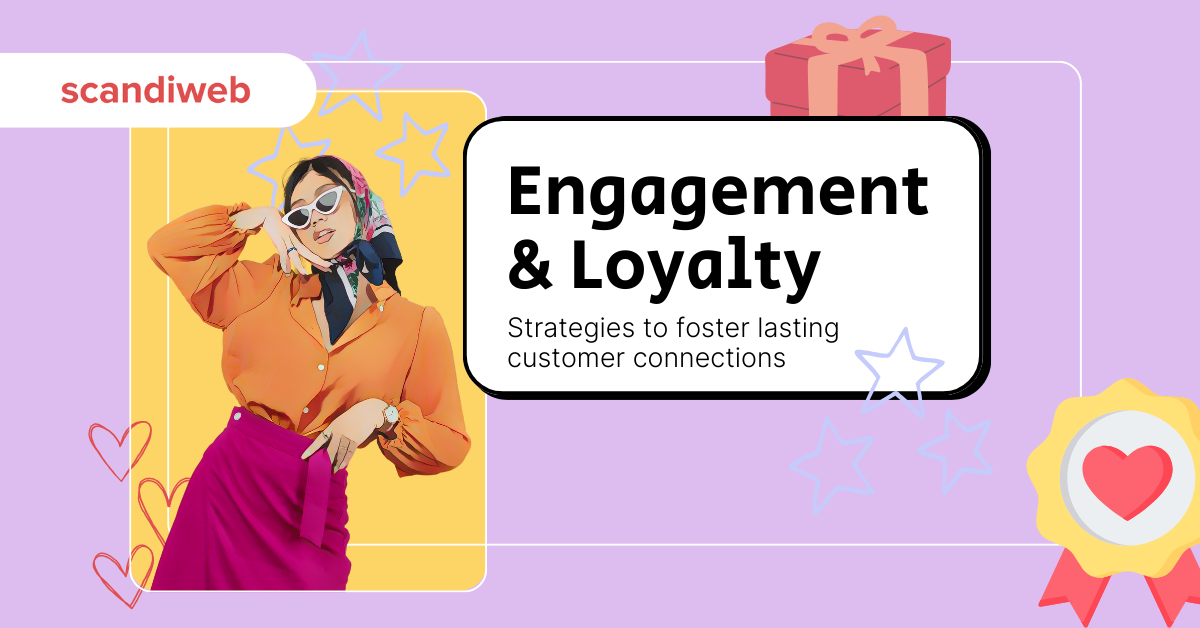

Share on: